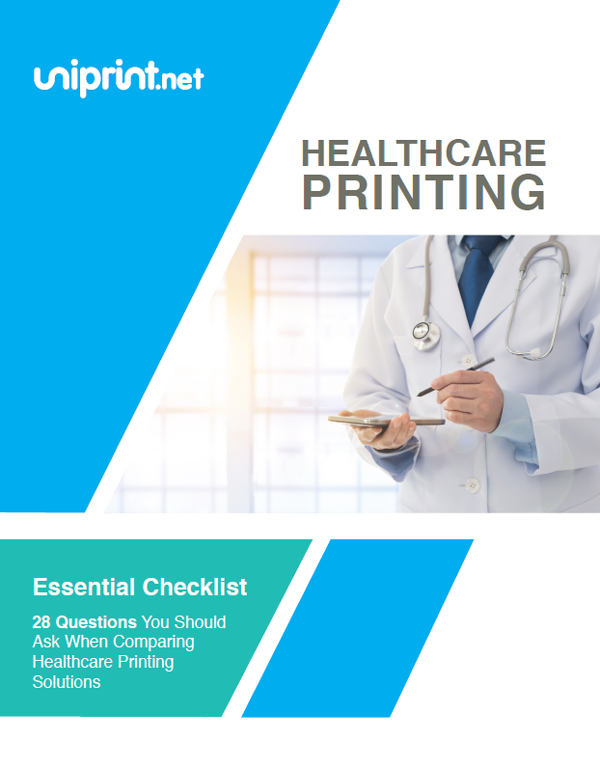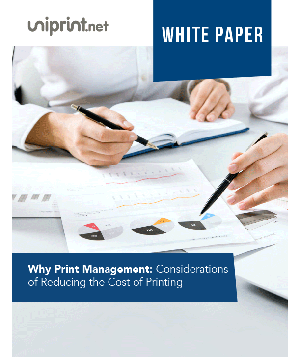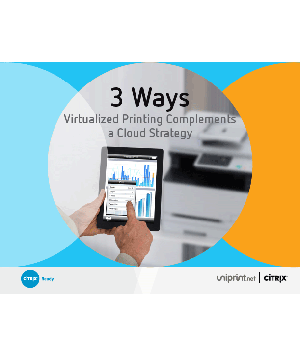Enterprise Print Management – VDI Printing Solution Alternatives
Enterprise Print Management Solution Alternatives
In my last post, I mentioned that serverless printing can be a great interim solution for enterprises that have consolidated their servers to the data center to save on cost and maintenance issues.
However, for organizations operating in a virtualized desktop environment (VDI), serverless printing may not be the best answer, as serverless printing can cause issues with bandwidth, system instability and maintenance.
Firstly, there is no saving on bandwidth in WAN print traffic. Since virtualized desktops run in the data center, print traffic from the workstation to the remote printer cannot be eliminated.
Secondly, system instability is bound to occur when too many printer drivers are installed on the same image.
Thirdly, maintenance is a constant battle. Whenever printers are added or removed, their VDI images will need to be updated and tested, costing a lot of time and productivity.
What is Virtualized Desktop (VDI) Printing?
When it comes to print traffic and data flow, there is a major difference between physical desktop printing and virtualized desktop printing.
Physical desktop printing is simply print traffic flowing from a workstation to a printer.
However, once virtualization is introduced, all desktops are now running in the data center, which means that print traffic now must run through the WAN connection in order to reach the printer.
The issue with VDI printing is that there is no way to eliminate print traffic from going through the WAN, which will inherently cause bandwidth and latency problems.
So what are the best options for eliminating bandwidth and print speed issues in a VDI environment? Here are a few options.
Option 1: Deploy A Print Server for Larger Sites
This option revolves around taking the virtualized desktop print server and moving it back to the remote site.
This way, print traffic again becomes local, and if the WAN goes down, the virtual desktops and print server will not be affected, allowing users to still print locally.
Deploying a remote site print server has all the advantages of serverless printing that eliminates bandwidth and reliability issues, in addition to improving manageability for organizations with a small number of remote sites, each with a larger user base.
Major drawback considerations for this option include manageability and support overhead requirements for organizations with multiple small remote sites.
If the site is relatively big, having a server on site is not too bad, as the large user number justify the deployment.
With smaller sites however, this is harder to justify with so much overhead and manageability issues. In the latter case, it is better to look at deploying other printing solutions.
Interested in finding out more about enterprise print management? Check out this free checklist on 30 questions you should ask when inquiring about enterprise printing solutions!
Option 2: Deploy Print Stream Compression
The simplest way to solve bandwidth issues, is to increase the bandwidth of your connection, which may solve the problem, but cost.
The larger your environment and remote sites are, the costlier it will become. A viable alternative is to implement print stream compression.
Print stream compression works by compressing print data that can be transmitted across the WAN at a much faster speed, and then decompressing the data before it reaches the printer.
This can be done by a network appliance either through a firewall, router or by adding a third party print appliance.
Most high-end firewalls and routers by default have a compression system built in, but depending on your deployment and budget, you need to decide which option would be best for you to use.
Option 3: Enhance Your Print Server
If you are looking to save even further on bandwidth, along with eliminating print instability and management issues, you should also consider installing a third party universal printer driver.
Some of these third party UPDs have proven to deliver measurable ROI by eliminating printing issues, reducing IT support calls and reducing print wastage, which is why the many organizations operating in virtualized environments now use some type of third party solution.
We will look into this area and how to solve VDI instability issues in the next part of this blog series.
Which Option Is Best for You?
The answer ultimately depends on you and your specific circumstances. Different factors such as price, cost of installation, deployment, and IT infrastructure all come into play when choosing the best print management solution for your organization.
Found this article helpful? Give us your feedback or Share it with others!
Try UniPrint InfinityCloud
Whether you are printing at the office or at home, UniPrint InfinityCloud is the cloud printing solution of choice for your organization.
Recent Posts
- Why Traditional Printing No Longer Works In Your Office
- How to Streamline and Modernize Printing in Healthcare Environment
- When Print Management Becomes a Crisis: How to Act Fast
- 10 Ways Cloud Print Management Can Increase Security to Prevent Data Loss and Increase Productivity
- Serverless Printing 101: A Beginner’s Guide to Going Server-Free with Print
- Cloud Printing Management: The Secret to Fewer Help Desk Tickets
- Why Should You Outsource Printing Management? A Comprehensive Overview
- How Cloud Print Management Prevents Print Server Vulnerabilities
- Is Printing Dead?
- How InfinityCloud Outshines Microsoft Universal Print in 2024
- See All















